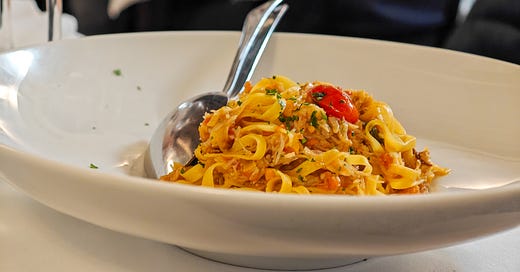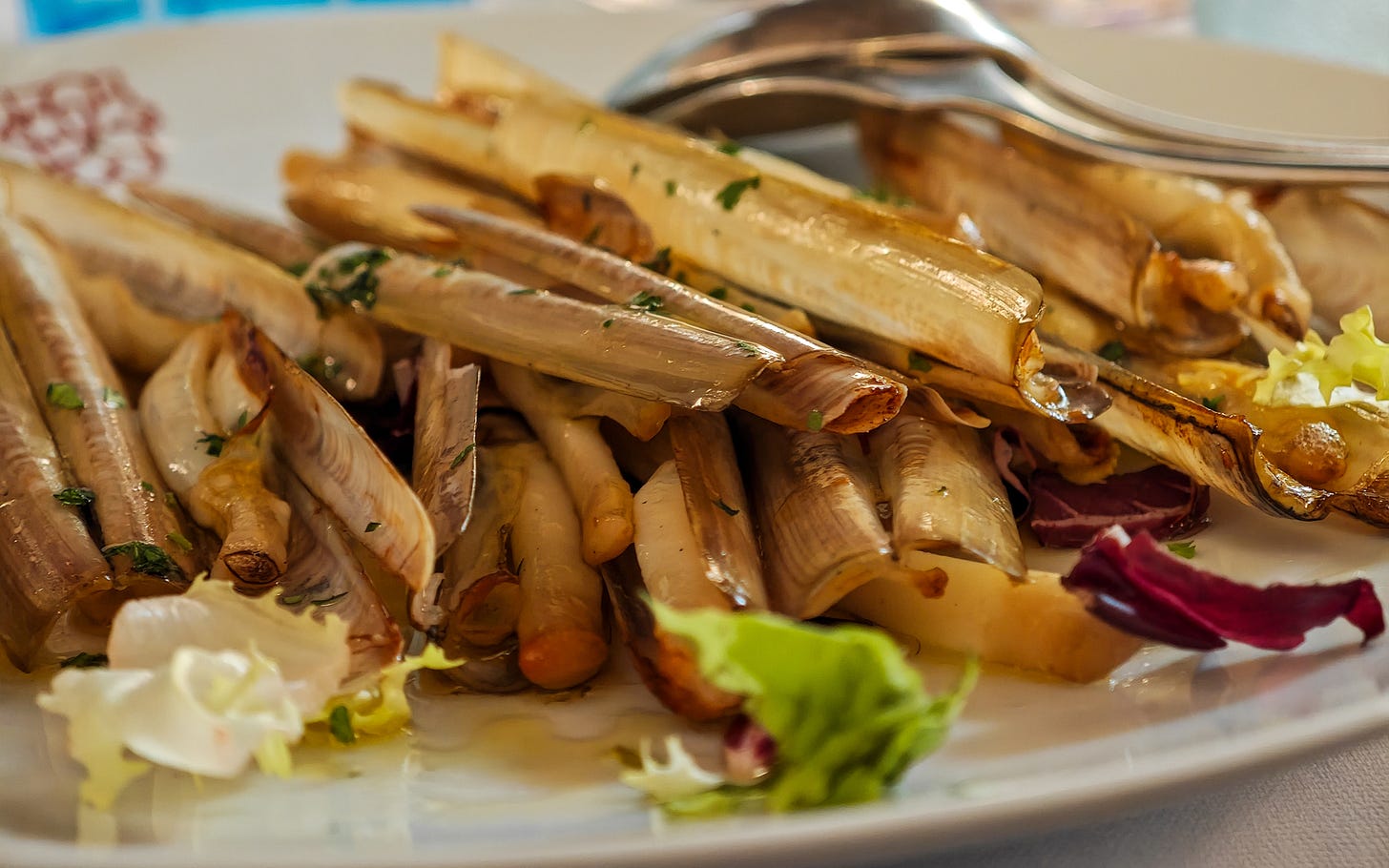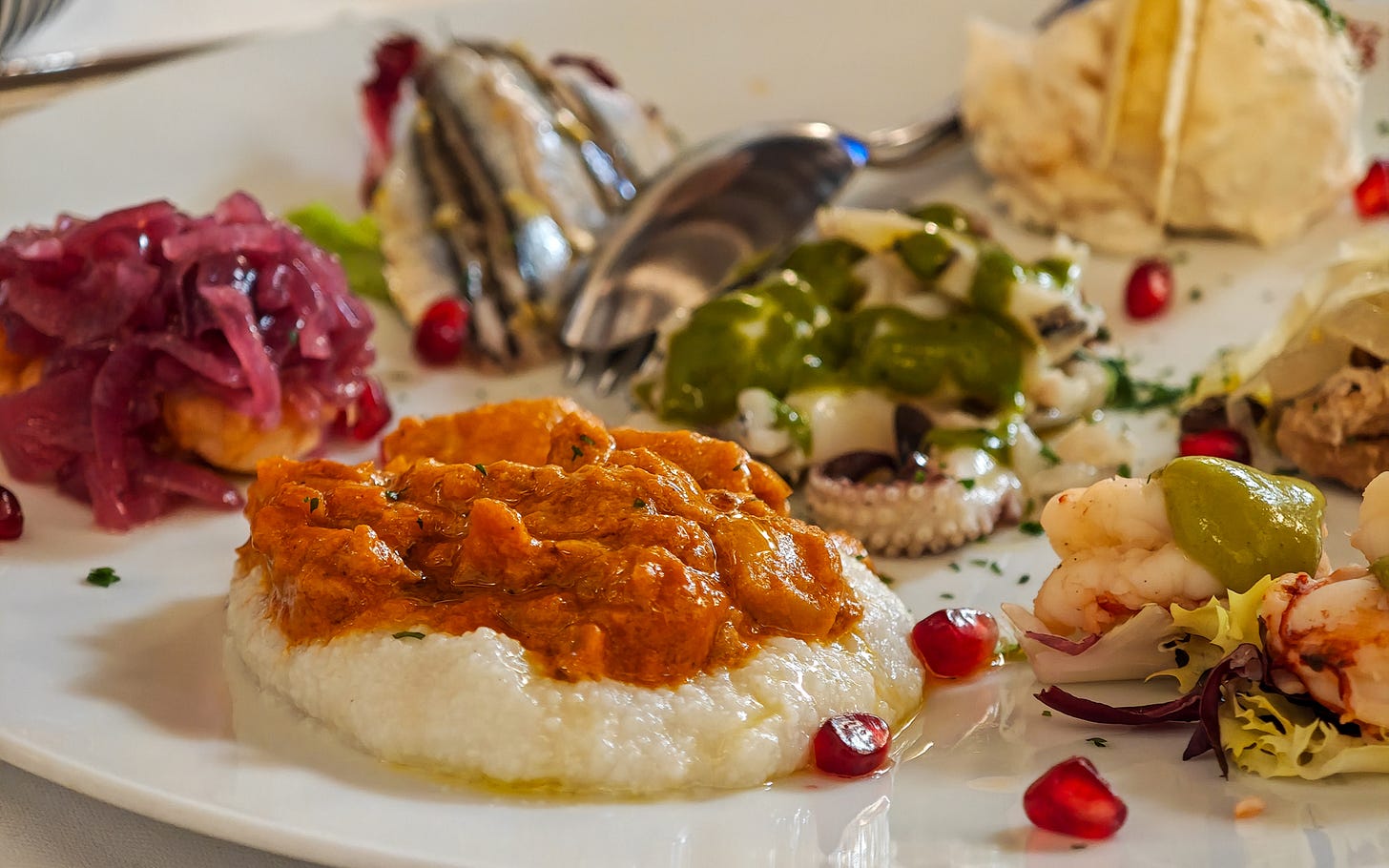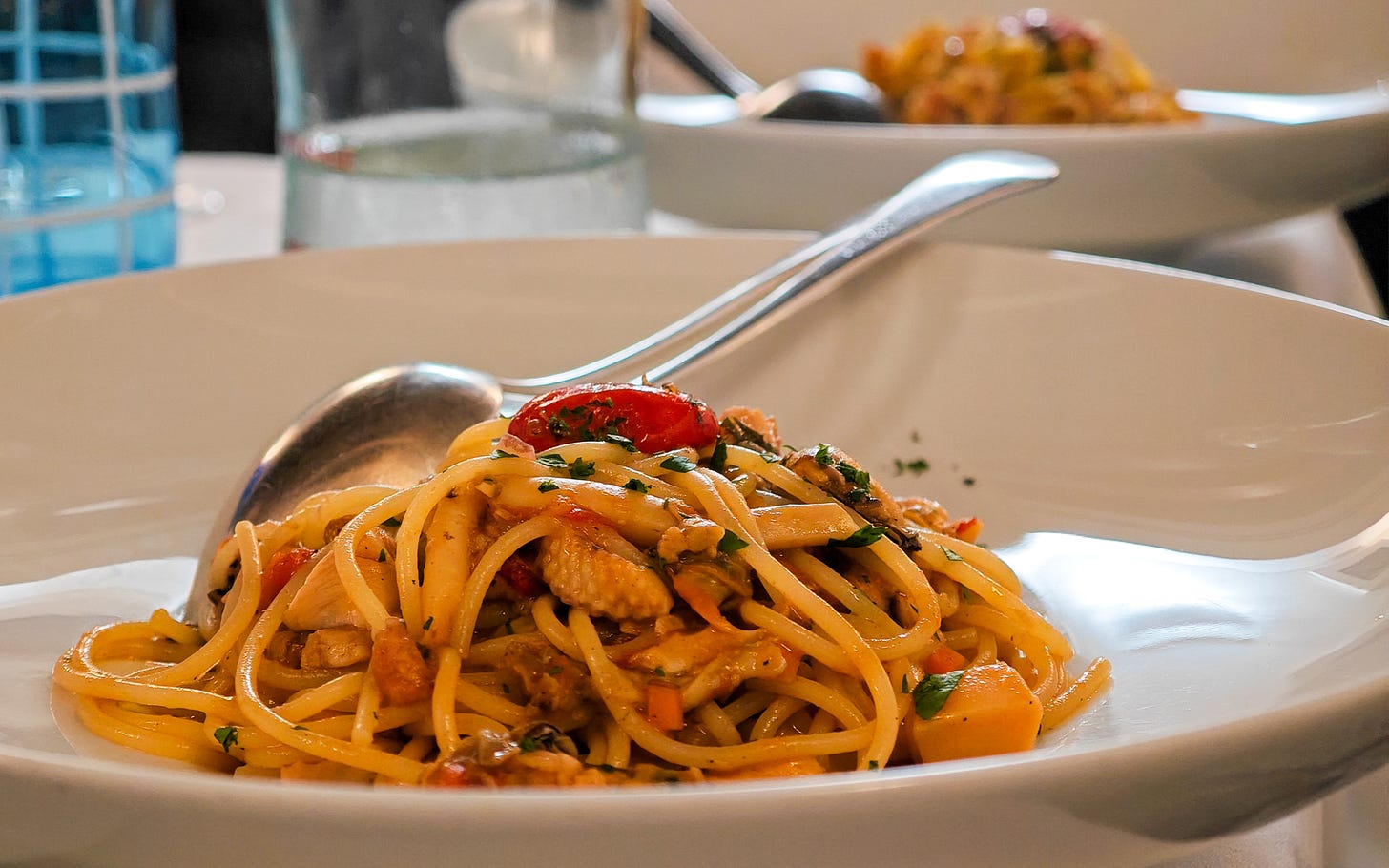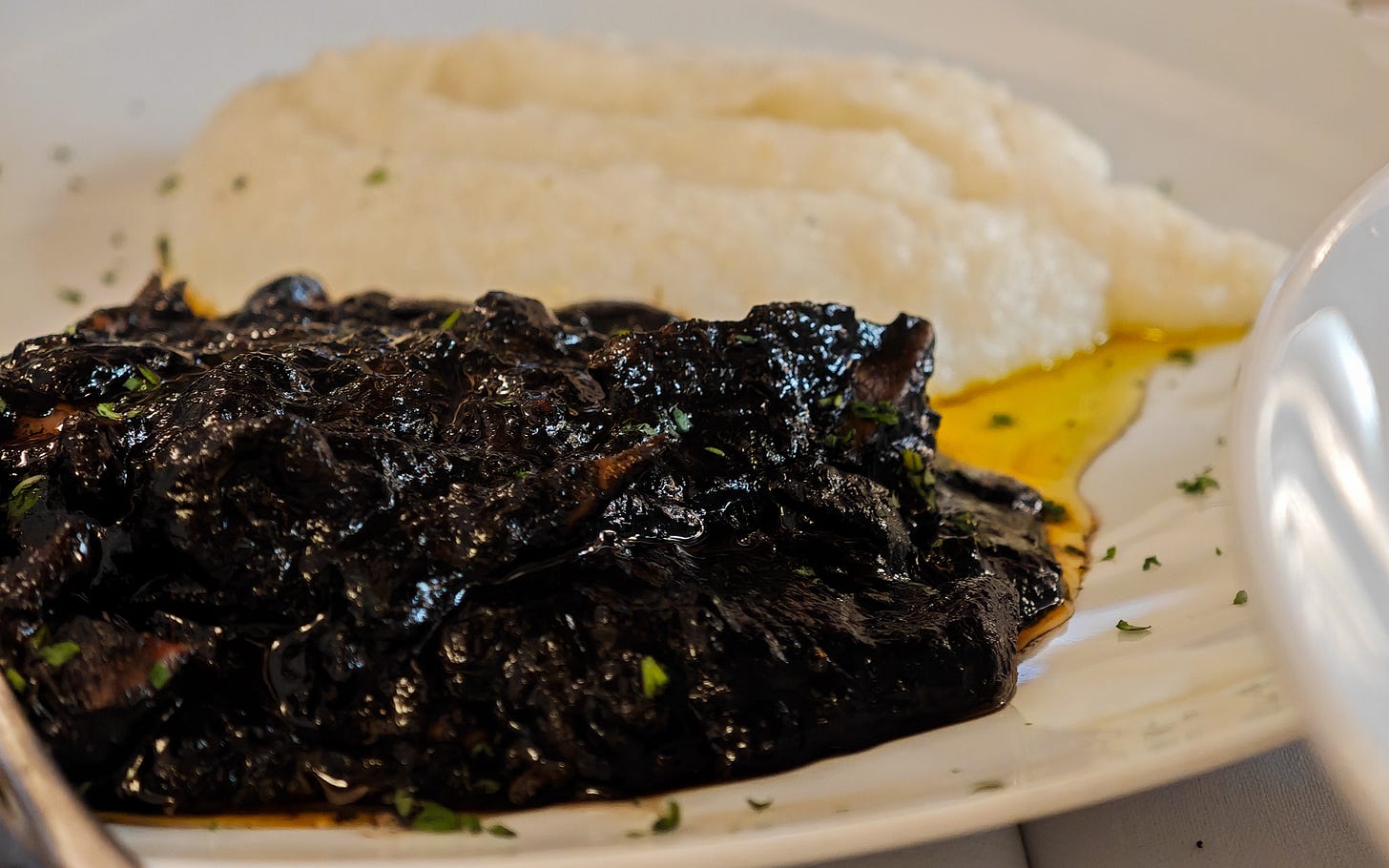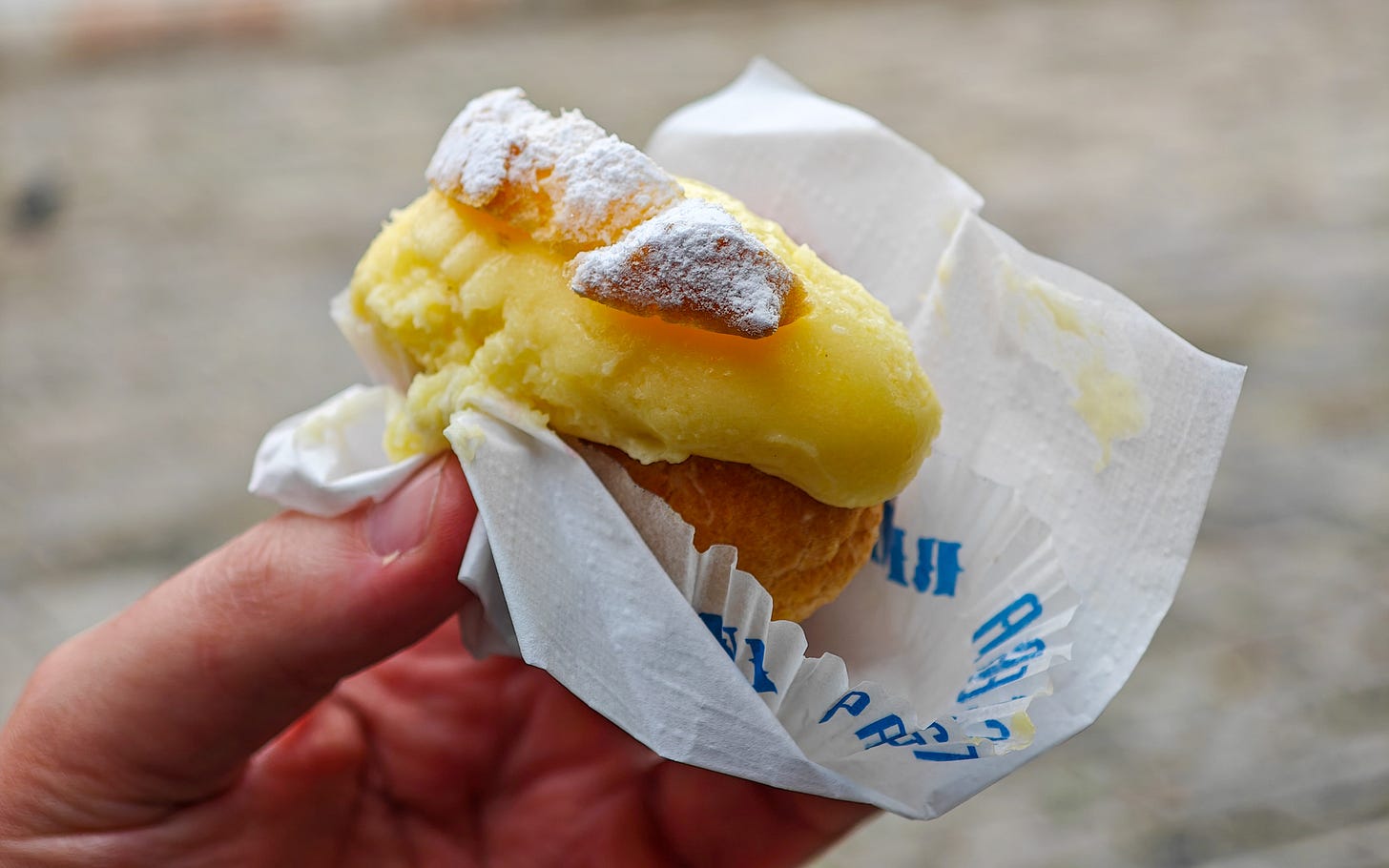“No pizza, no lasagne, no menù turistico,” reads the faded sign pinned by the front door of Venice’s Le Antiche Carampane, a gentle warning that through these doors concessions are made for neither modernity nor the city’s overwhelming tourist industry.
The last time I visited Italy I took the excuse to write about two restaurants offering modern takes on classic dishes, so this time around it only felt fair to go a little more old school.
Founded in 1983, Le Antiche Carampane isn’t quite antica enough to be a historical landmark in its own right, though the Bortoluzzi family that runs the restaurant can trace its roots through the local Rialto fish market much further back than that.
But more than simply being old, Le Antiche Carampane is traditional. While modern Venice boasts no shortage of natural wine bars, small plates spots, and Japanese-Italian fusion options, Antiche Carampane is content to simply be a trattoria — and a particularly Venetian one at that.
The restaurant itself is somewhere between cramped and cosy, all white walls and wooden furniture, though the former are scarcely visible under the countless paintings and photographs of Venice — and the restaurant — in the good old days. Forward-looking, this is not.
The menu is concise, and constant to a point — adjustments are made for the season and the day’s catch, such as a dish heaving with oil-slicked razor clams fresh from the fish market just a few minutes’ walk away, but this isn’t the place for a daily blackboard of rotating options. This is the sort of restaurant where dishes stay on the menu for decades, not days. The classics are the classics for a reason, after all.
Antipasti are all local, drawn from the cicchetti that dominate Venice’s drinking holes. The sarde in saor here are the best I eat anywhere in the city, sardines topped by a tangled heap of straw-gold onions, pickled sweet and sour and utterly compulsive. Anchovies, baccalà, and thick shrimp all come with their own accompaniments, a sampler spread of Venice’s favourite finger foods — fitting enough, since by the end I was down to said fingers, rummaging around for stray slices of onion I couldn’t bear to waste.
Spaghetti in cassopippa isn’t technically Venetian, hailing instead from the fishing village of Chioggia at the other end of the lagoon. A seemingly straightforward seafood and tomato sauce is given depth by the addition of nutmeg, ginger, cinnamon, cardamom, and coriander, the layers of spices somehow conspiring to make the mussels and clams they coat taste even more deeply of the sea. This is how I want every seafood pasta to taste, like the sauce itself has been dredged from the depths, a rich, red brine coating every delicate strand of spaghetti.
Tagliolini with spider crab seems to offer about as much crustacean as carbohydrate, thick clumps of crabmeat topped by a single cherry tomato, a token gesture that only serves to emphasise just how much the seafood is the star here. This is as light as the cassopippa is heady, a cloud of fresh egg pasta on the cusp of evaporating, grounded only by tender shreds of meat that weigh down every ribbon.
We only order one secondo, and I leave with a pang of regret that we couldn’t manage more. Small scraps of cuttlefish are stewed soft in their own ink, a jet black contrast to the snowdrift of polenta on the other side of the plate, the two united by the orange glow of a slow spreading pool of olive oil. Instead of aiming for that fleeting moment when cuttlefish is relaxed but not yet rubbery, the chefs have pushed past until there’s no resistance at all. The first bite disconcerts me, as expecting to chew I almost slurp instead, but there’s a method to the madness. Rendered as soft as the polenta it shares a plate with, this oozes comfort just as Le Antiche Carampane’s old fashioned surrounds do, a gentle warmth to stave off the cold, foggy, Venetian winter nights, a dish to fill you and fortify you before you return to the world.
Fortunately, when it comes to time, the rest of the world out there isn’t so bad either. We skip dessert, safe in the knowledge that Pasticceria Rizzardini (which really is a landmark — it’s been around since 1742) is just a canal-crossing away. I savour the amber glow that bounces off glass cabinets heaving with confections, painstakingly selecting today’s offering: a puff of pastry overflowing with crema pasticcera that smudges the paper casing. A bite or two and it’s gone, but not to worry: the best thing about the old ways is that they’re not really going anywhere.


